Abstract
Bulinus truncatus rohlfsi is the intermediate host of urinary schistosomiasis, which is highly endemic in the man-made Volta Lake. In 1971, a WHO/UNDP schistosomiasis project was established in the Pawmpawm branch and part of the Afram branch of Volta Lake. Malacological findings of the preliminary phase indicated that the snails were distributed in the littoral zone of the lake, and that this distribution was correlated with the presence of vegetation, especially Ceratophyllum. Transmission nearly always occurred in “water contact sites”, i.e., places where people come into contact with water.
A snail-sampling technique with palm-leaf mats was developed and standardized after it had been shown in sensitivity trials to compare favourably with a modified version of the “man—time” sampling method, in which the number of snails collected per man-hour is recorded. It is recommended that both these methods should be used to conduct ecological studies of B. rohlfsi in water contact sites.
Full text
PDF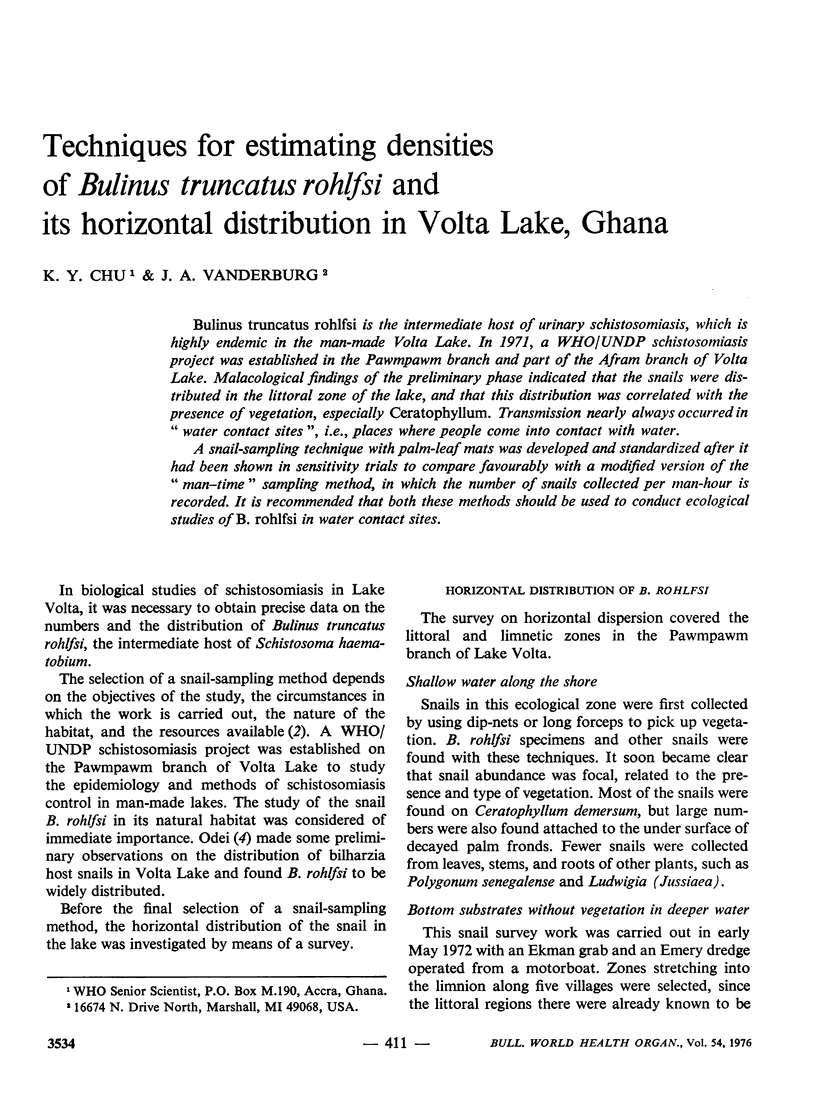
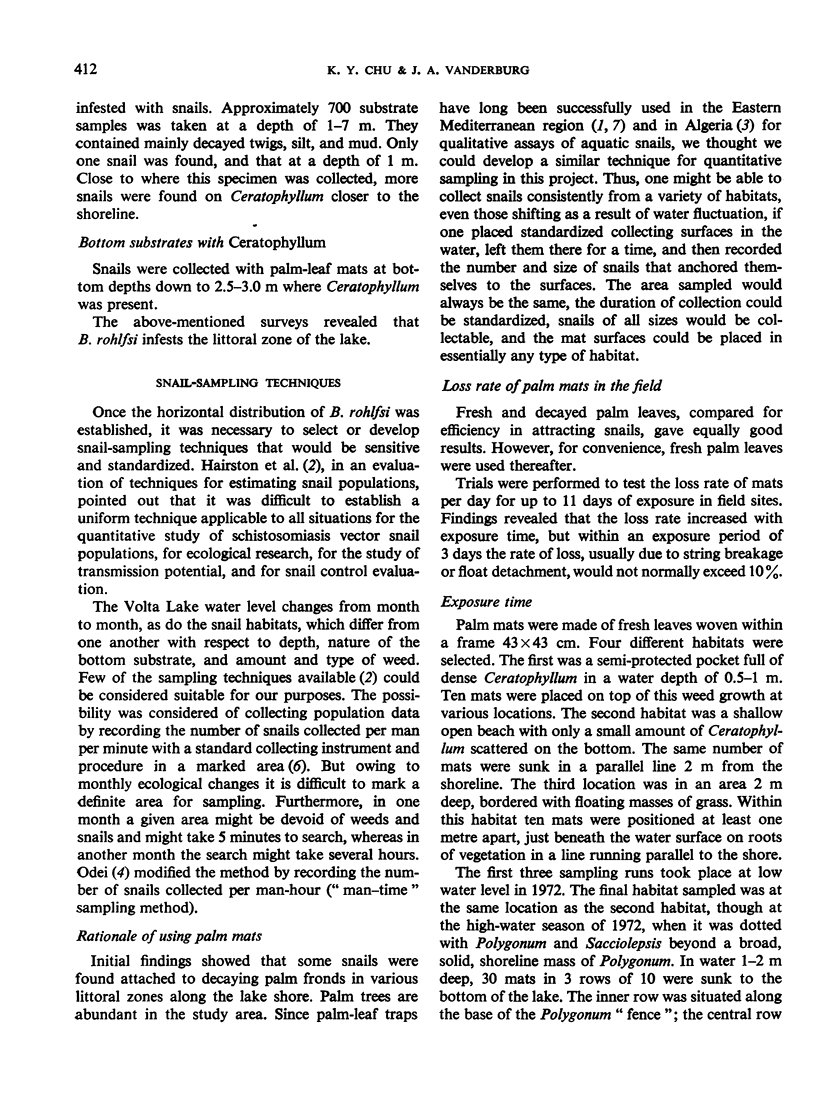
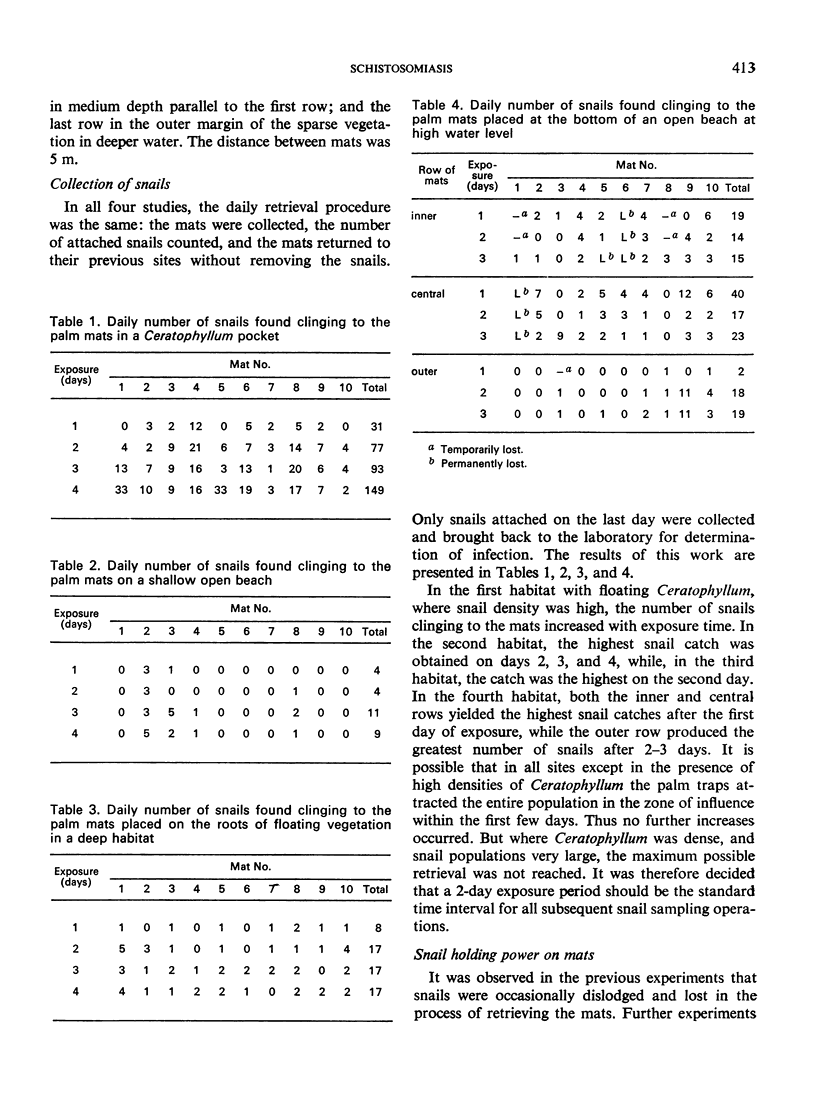
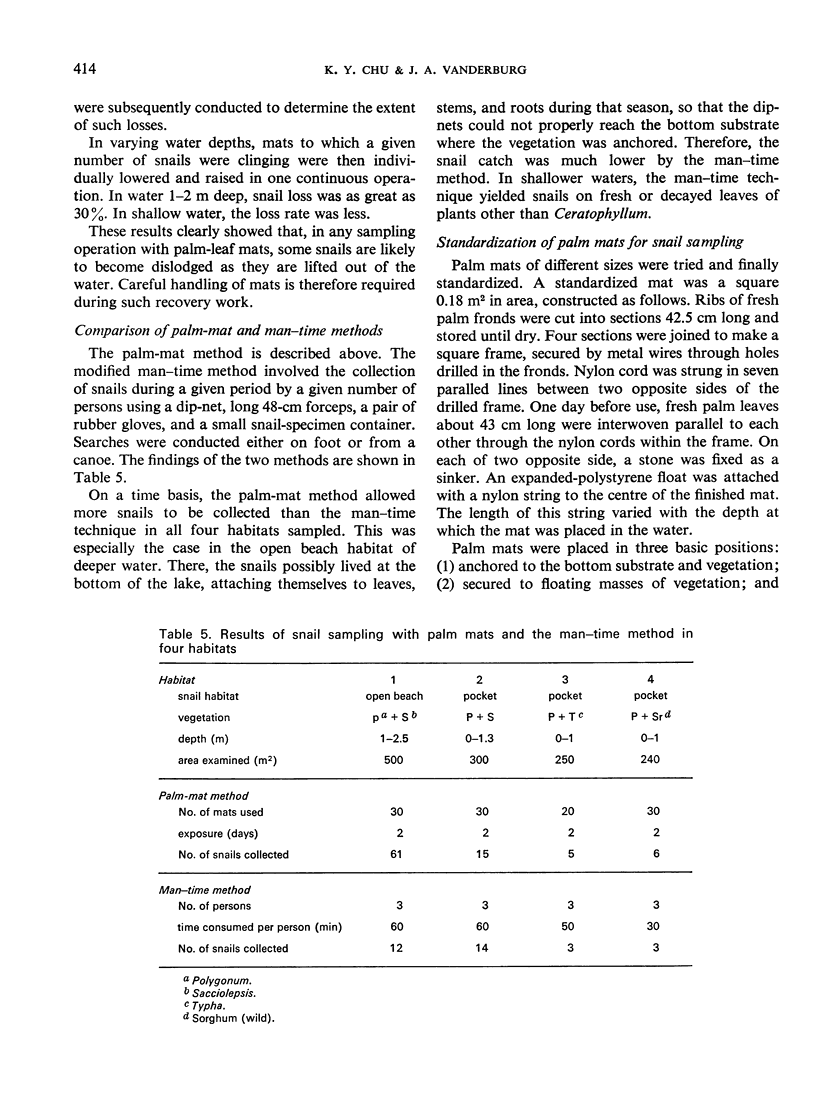
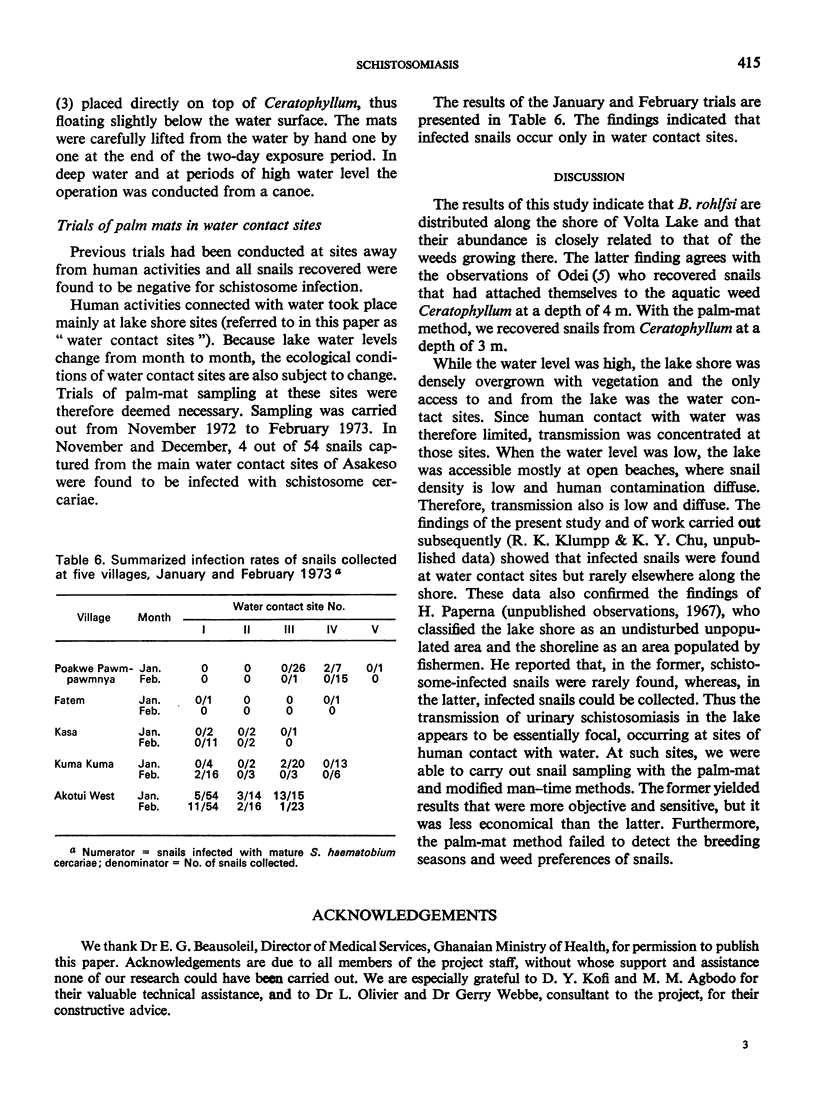

Selected References
These references are in PubMed. This may not be the complete list of references from this article.
- OLIVIER L., SCHNEIDERMAN M. A method for estimating the density of aquatic snail populations. Exp Parasitol. 1956 Mar;5(2):109–117. doi: 10.1016/0014-4894(56)90008-x. [DOI] [PubMed] [Google Scholar]


